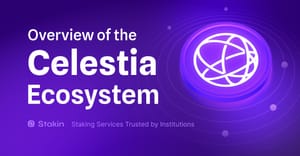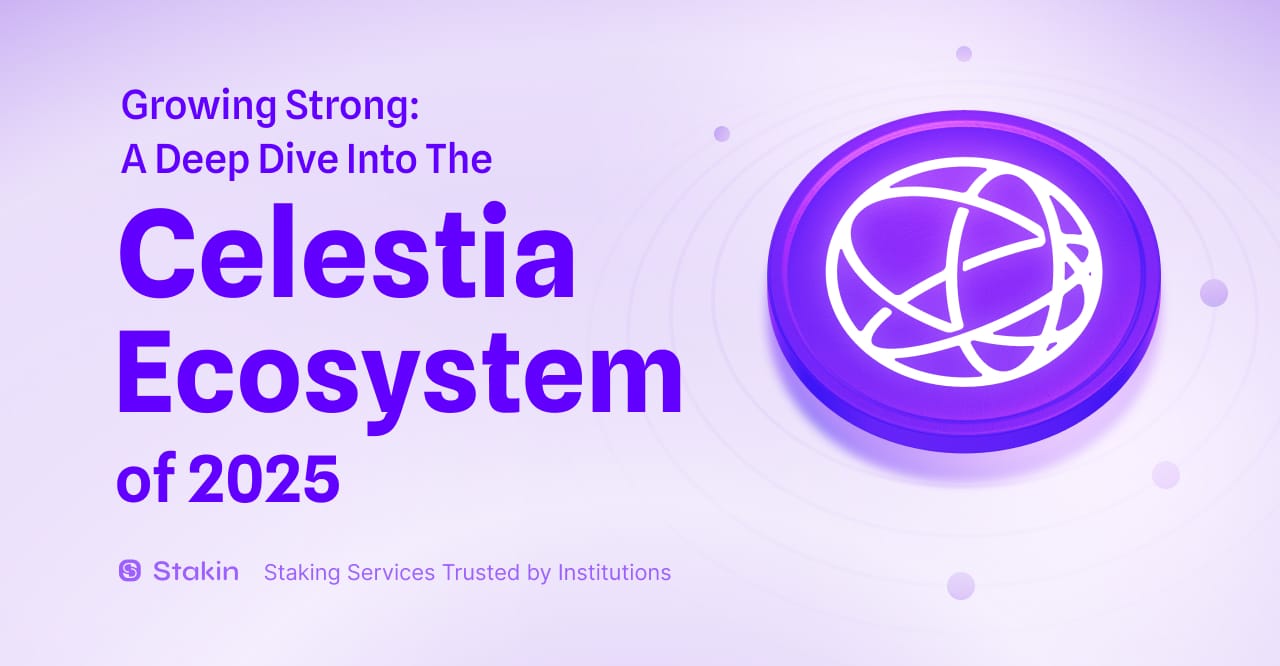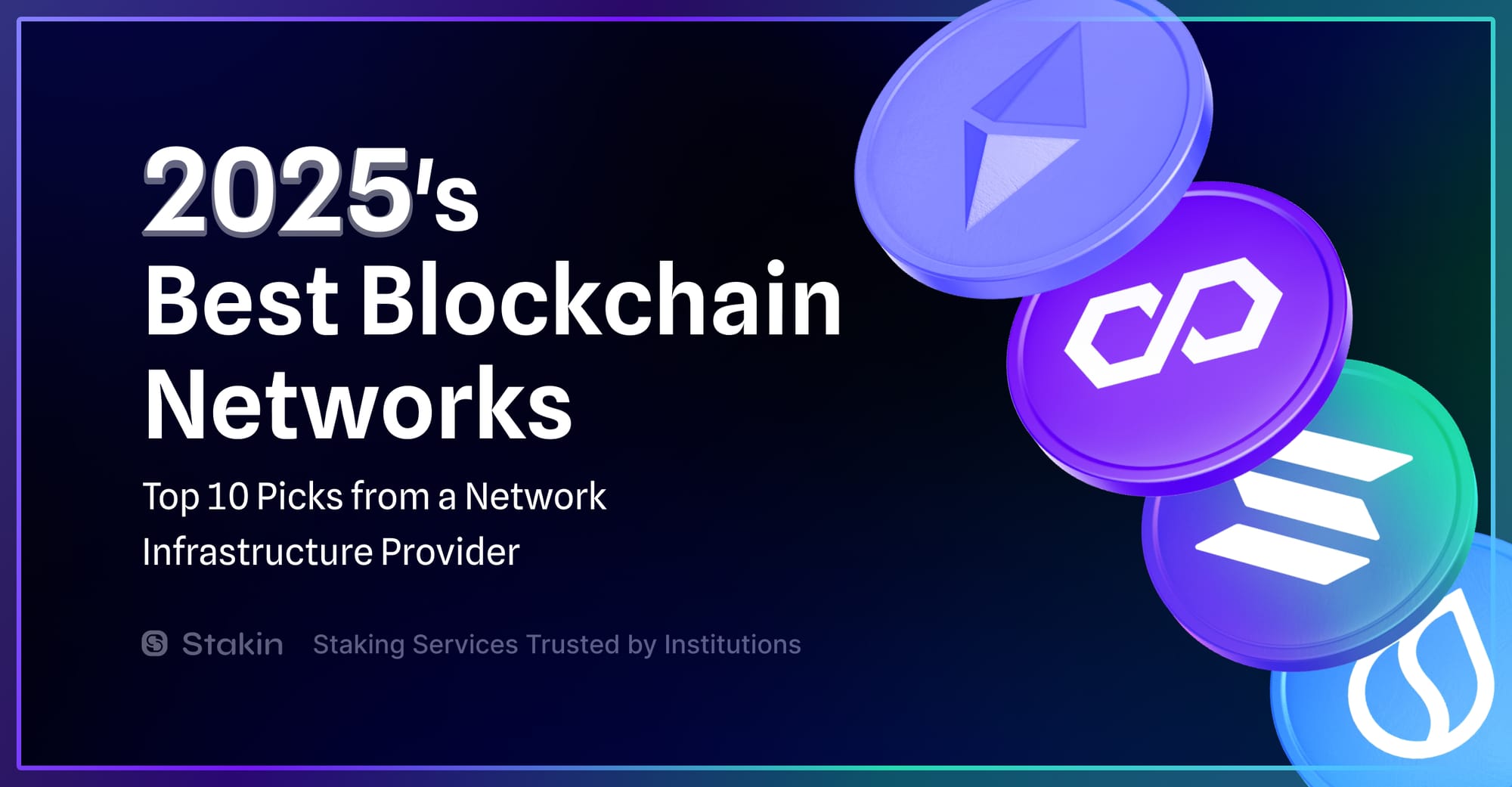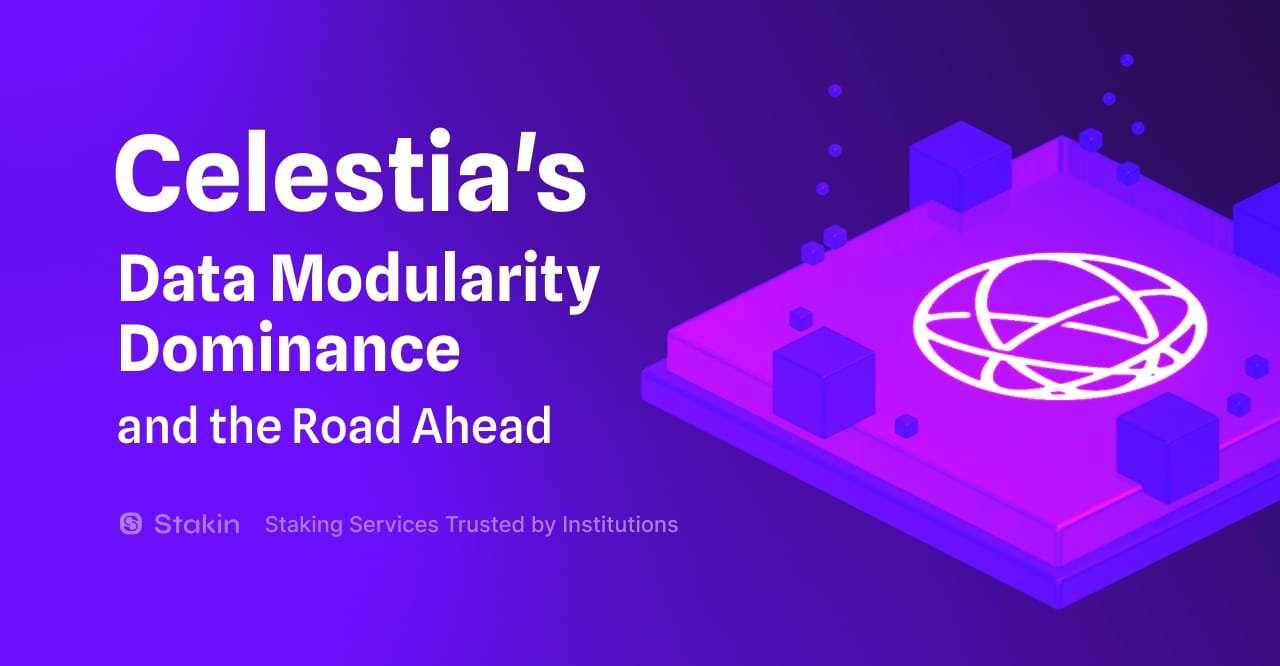Celestia has risen in prominence within the Cosmos ecosystem for its modular data availability (DA) network, enabling anyone to launch a chain while securely scaling with the number of users.
With Celestia, the Consensus and Data Availability (DA) layers are distinct from the Execution Layer, allowing for enhanced efficiency and adaptability. This design ensures that applications benefit from Celestia's robust security features. Moreover, it facilitates upgrading applications without necessitating hard forks in the main chain.
DA in blockchain refers to ensuring that all necessary data needed to validate transactions is available and accessible to blockchain users. Celestia handles the DA layer separately from the execution layer. This is possible due to a process called DA sampling.
DA sampling allows nodes to verify that all necessary data for a block is available without downloading the entire block. This ensures that even if a node only sees a small portion of the data, it can confidently verify its completeness.
Through this approach, Celestia enhances scalability by reducing the data load on individual nodes. This method allows nodes to confirm the availability and integrity of data without downloading the entire block.
As a result, more transactions can be processed in parallel across different blocks without overloading the network. This reduces bottlenecks and scales the network's load capacity, making it possible to support more transactions and users without sacrificing speed or security.
Celestia Ecosystem Overview
The neat thing about Celestia's modular architecture is that it enables developers to utilize different execution environments, such as Ethereum Virtual Machine (EVM), Move, or other programming frameworks. This doesn't force developers to adopt new frameworks; instead, they can build and deploy custom blockchains using the programming language or framework they are already familiar with.
Celestia's unique nature excludes it from a few things we typically associate with monolithic frameworks. Those associations center around DeFi and NFTs, to name a few. This is because Celestia is designed to be a specialized blockchain that allows other chains (rollups) to use it for data availability. Thus, Celestia does not provide execution-like smart contracts on the base layer, but rollups running on top of Celestia can do all these things.
This is why analyzing the Celestia ecosystem should be done through the lenses of the different rollups, services, and frameworks on Celestia rather than total value-locked (TVL) metrics.
Let's highlight a few of these in greater detail below.
Rollups
Rollups are commonly known as a "Layer 2" (L2) solution used to increase the scalability of blockchain networks. Layer 2 blockchains achieve this by processing transactions outside the main base layer (L1) and then posting the data back to it. This allows rollups to handle many more transactions than could be processed on the main base layer.
When utilized with Celestia, rollups benefit from Celestia's DA layer. Thanks to Celestia's foundation, all transactional data processed by these rollups remains available and verifiable without compromising decentralization or security.
Below are a few notable examples of rollups utilizing Celestia.
Astria
Astria is a platform that enhances the deployment of decentralized rollups, which are secondary layers for processing transactions off the main chain. It ensures transaction data is stored on a foundational layer like Celestia, allowing rollups to independently focus on their specific functionalities.
Eclipse
Eclipse is a Layer 2 solution leveraging the Solana Virtual Machine for fast and scalable decentralized applications. It combines Ethereum's security features with its architecture to support various dApps. Eclipse uses Celestia's DA layer to ensure data integrity, enhancing its scalability while preserving decentralization.
Manta Network
Manta Network focuses on zero-knowledge (ZK) applications, utilizing Celestia's DA layer for privacy and scalability in blockchain operations. It supports developing privacy-centric dApps with secure on-chain identity verification tools.
Rollups-As-A-Service (RaaS)
RaaS provides a framework for developers to quickly deploy their own rollups without building everything from the ground up. This service enables developers to focus solely on application and user experience, bringing infrastructure, security, and scalability solutions to developers.
You may also be interested in:
When utilized with Celestia, RaaS providers benefit from Celestia's modular and scalable DA layer, which ensures all transactional data in the rollup is verifiable and secure. This combination allows developers to launch scalable and efficient blockchain applications quickly and with reduced overhead.
AltLayer
AltLayer provides a RaaS platform that enables quick deployment and custom roll-up management. It supports optimistic and zk-rollup architectures and integrates with Celestia's DA layer to enhance security and scalability. This service is designed for developers to efficiently launch scalable blockchain solutions for diverse applications, leveraging Celestia's modular infrastructure.
Caldera
Caldera is a RaaS platform whose TVL already exceeds $1B. Caldera enables easy deployment of custom rollups. It integrates with Celestia's DA solutions to enhance scalability and reduce costs. Caldera supports various rollup architectures, providing developers with flexibility when creating dApps.
Snapchain
Snapchain offers a RaaS platform, enhancing scalability for decentralized networks, on-chain games, and DeFi. It utilizes zk rollups for efficiency and integrates features such as cross-layer bridging and tools for private network setups. Snapchain aligns well with platforms like Celestia, leveraging its DA capabilities for improved performance.
Rollup Frameworks
Rollup frameworks are sets of tools and protocols designed to help developers build and deploy rollups. These frameworks simplify development by providing the necessary infrastructure and components for rollup operation. When combined with Celestia, rollup frameworks can leverage Celestia's DA layer to ensure all transaction data is available and verifiable.
Arbitrum Orbit
Arbitrum Orbit is part of the Arbitrum ecosystem, offering tools to build custom Layer 2 or Layer 3 chains with the Arbitrum Nitro stack. It allows for unique features like custom gas tokens and is designed for high throughput and low costs. Its integration with Celestia enables orbit chains to utilize Celestia's DA layer for enhanced transaction data security and accessibility.
Dymint
Dymension provides a rollup framework for developing scalable, customizable RollApps. It focuses on optimizing dApps for better performance and cost-efficiency. By integrating with Celestia's DA layer, Dymension enhances the security and efficiency of its rollups, aiding developers in scaling their projects effectively.
Rollkit
Rollkit is a rollup framework that supports the development of sovereign, customizable blockchains. It focuses on user control and easy deployment and utilizes Celestia's DA layer to enhance the security and operational efficiency of those blockchains.
Future Outlook
Celestia is at the forefront of the "modular money" narrative. The term was coined by Stride, which partnered with Hyperlane to enhance Celestia's modular ecosystem by enabling cross-chain functionality for TIA and its liquid-staked counterpart.
stTIA has gained quick traction, swiftly becoming Celestia's largest liquid staking token (LST) after its launch and becoming one of the fundamental economic units within the ecosystem—much like ETH in Ethereum. We've also seen other LST protocols, such as Milkyway, receive new funding to continue growing the liquid staking ecosystem around Celestia.
What remains to be seen is how the ongoing introduction of new DA solutions such as EigenDA, Avail, and others challenge Celestia as the first mover for DA.
These solutions could potentially turn DA into a more affordable and commoditized resource. By improving the efficiency and lowering the cost of DA services, these platforms could create competitive pressure on Celestia by offering similar or better services at a lower cost.



